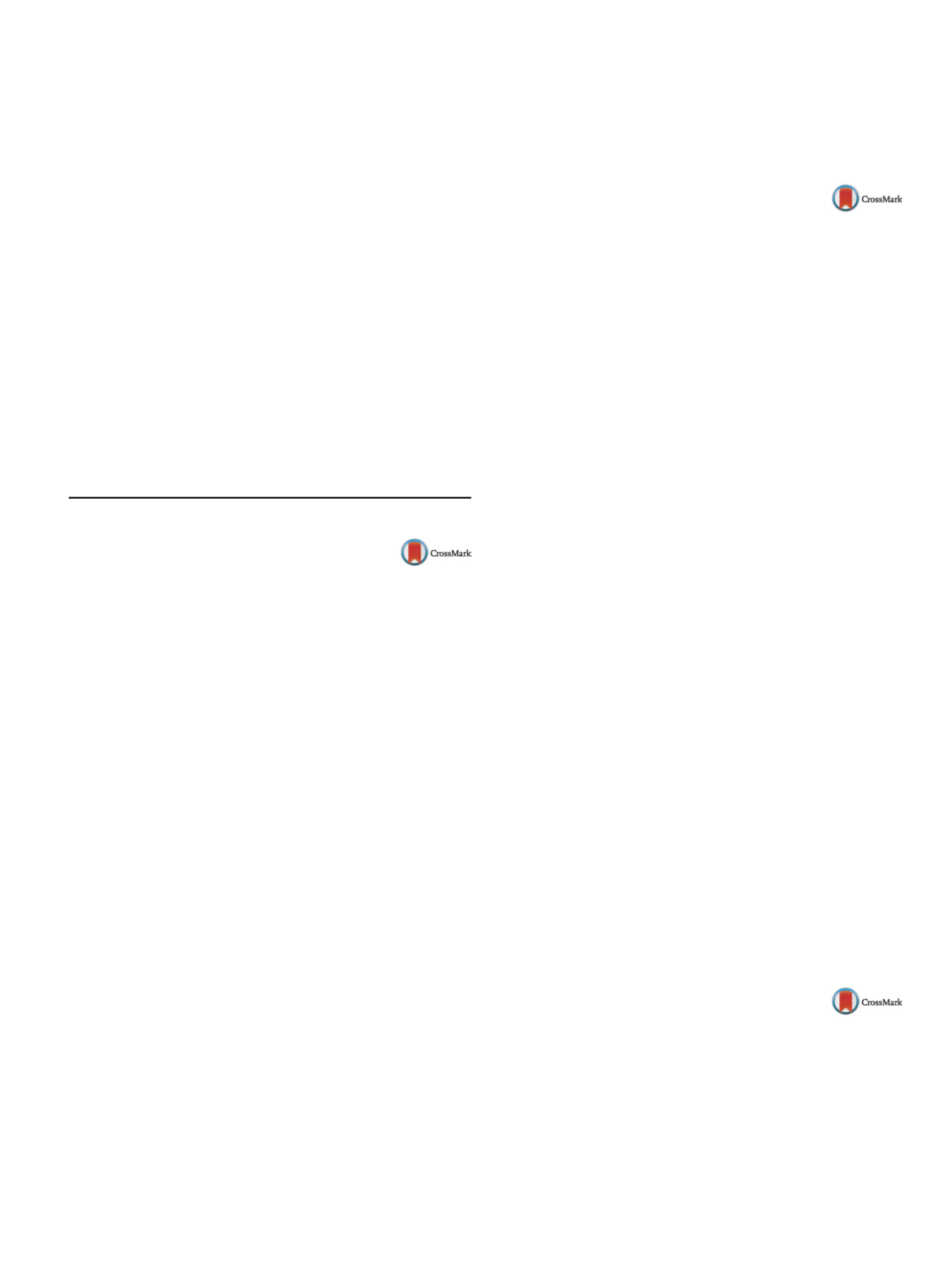

25th European Congress of Psychiatry / European Psychiatry 41S (2017) S106–S169
S155
Method
Semi-structured interviews with eight responsible clini-
cians and four focus-group interviews with 20 ACT providers were
recorded and transcribed. We also read case files and observed
selected treatment planning meetings. The data were analyzed
with a modified grounded theory approach.
Results
The ACT teams provided high-intensive services over
longer periods of time, which gave the teams important knowl-
edge about the patients, reduced clinical uncertainty, and allowed
for well-informed decisions about the need for coercive interven-
tions. The treatment criterion was typically used to justify the need
for CTOs. However, the danger criterion was in some cases used
when patients had to be readmitted to hospital.
Conclusions
According to the clinicians that were interviewed,
patients’ need for treatment wasmost often used to justify the CTOs
in the Norwegian ACT teams.
Disclosure of interest
The authors have not supplied their decla-
ration of competing interest.
http://dx.doi.org/10.1016/j.eurpsy.2017.01.2017e-Poster walk: Epidemiology and social
psychiatry; intellectual disability
EW0149
Postpartum depression in a public
hospital in Cyprus. Prevalence,
risk factors
K. Argyropoulos
1, G. Andreou
2, D. Avramidis
1 ,∗
, P. Gourzis
3,
G. Charalambous
2, E. Jelastopulu
11
Medical School, University of Patras, Public Health, Patras, Greece
2
Frederick University, Postgraduate Program Health Management,
Nicosia, Cyprus
3
Medical School, University of Patras, Psychiatry, Patras, Greece
∗
Corresponding author.
Introduction
Postpartum depression (PPD) is a serious mental
health condition. Untreated PPD places the mother and infant at
risk and is associated with significant long-term effects on child
development and behavior.
Objectives
Appropriate screening for and prompt recognition and
treatment of depression after the birth of a child are essential for
maternal and child well-being.
Aims
The purpose of the present studywas to estimate the preva-
lence of PPD in the first 5 days after the birth of a neonate and to
investigate associations with several risk factors.
Methods
A cross-sectional study was conducted among 150
mothers, in a public obstetric hospital in Nicosia, Cyprus. A
questionnaire was administered including socio-demographic
characteristics. The Greek version of the Edinburgh postnatal
depression scale (EPDS), a 10–item questionnaire to identifying
women who are at risk of PPD, was used to estimate depression
among the participants.
Results
According to EPDS, 42% of the mothers screened positive
for risk of developing PPD. Higher risk was observed in very young
mothers (<20 years) (66.6% vs 15%), in women with history of psy-
chological disorders (86.95% vs 33.85%), in single mothers (71.69%
vs 22.8%), in women with serious problems during the pregnancy
(74% vs 23.95%) and in mothers with not healthy neonate (75.7% vs
32.4%).
Conclusion
The study reveals a high prevalence of PPD and iden-
tifies various risk factors associated with developing PPD. The use
of maternal depression screening programs such as the EPDS may
help to recognize an elevated risk of postpartum depression and to
ensure a healthier mother-child relationship.
Disclosure of interest
The authors have not supplied their decla-
ration of competing interest.
http://dx.doi.org/10.1016/j.eurpsy.2017.01.2018EW0150
Antidepressant use during pregnancy
and the risk of major congenital
malformations in a cohort of
depressed pregnant women:
A re-analysis of the Quebec pregnancy
cohort
A. Bérard
1 , 2 ,∗
, J.P. Zhao
1, O. Sheehy
11
CHU Sainte-Justine, Research Center, Montréal, Canada
2
University of Montreal, Faculty of Pharmacy, Montréal, Canada
∗
Corresponding author.
Objective
To quantify the association between first-trimester
antidepressant exposure and the risk of major congenital malfor-
mations (MCM) in a cohort of depressed women.
Method
Data were obtained from the Quebec pregnancy cohort.
All pregnancies with a diagnosis of depression or anxiety, or
exposed to antidepressants in the 12months before pregnancy,
and ending with a live-born singleton were included. Antide-
pressant classes (selective serotonin reuptake inhibitors (SSRI),
serotonin norepinephrine reuptake inhibitors (SNRI), tricyclic
antidepressants (TCA), and other antidepressants), and types were
individually compared to non-exposure during the first-trimester
(depressed untreated). MCM overall and organ-specific malforma-
tions in the first year of life were identified.
Result
Eighteen thousand four hundred and eighty-seven
depressed pregnant women were included. Citalopram use dur-
ing the first-trimester was increasing the risk of MCM (aOR 1.36,
95%CI 1.08, 1.73; 88 exposed cases). Antidepressants with sero-
tonin reuptake inhibition effect (SSRI, SNRI, amitriptyline (themost
used TCA))were increasing the risk of certain organ specific defects:
paroxetine was increasing the risk of cardiac defects (aOR 1.45,
95%CI 1.12, 1.88), and ventricular/atrial septal defects (aOR 1.39,
95%CI 1.00. 1.93); citalopram was increasing the risk of muscu-
loskeletal defects (aOR1.92, 95%CI 1.40. 2.62), and cranyosynostosis
(aOR 3.95, 95%CI 2.08, 7.52); TCA was associated with eye, ear, face
and neck defects (aOR 2.45, 95%CI 1.05, 5.72), and digestive defects
(aOR 2.55, 95%CI 1.40. 4.66); and venlafaxine was associated with
respiratory defects (aOR 2.17, 95%CI 1.07, 4.38).
Conclusion
Antidepressants with effects on serotonin reuptake
during embryogenesis are increasing the risk of some organ specific
malformations in a cohort of pregnant women with depression.
Disclosure of interest
COI: Disclosures and acknowledgments: AB
is a consultant for plaintiffs in litigations involving antidepressants
and birth defects. All other authors report no financial relationships
with commercial interests. All authors have completed the ICMJE
uniform disclosure form.
http://dx.doi.org/10.1016/j.eurpsy.2017.01.2019EW0151
Dealing with specific cognitive
dysfunctions associated with
psychiatric vulnerability in
intellectual developmental disorders
D. Scuticchio , A. Bianco
∗
, M. Rossi , M. Piva Merli , M.O. Bertelli
CREA Research and Clinical Center, San Sebastiano Foundation,
Misericordia Di Firenze, Florence, Italy
∗
Corresponding author.
Introduction
Despite the increasing evidence of common neu-
rodevelopmental alterations and high simultaneous or sequential
co-occurrence, the relationship between specific cognitive dys-


















